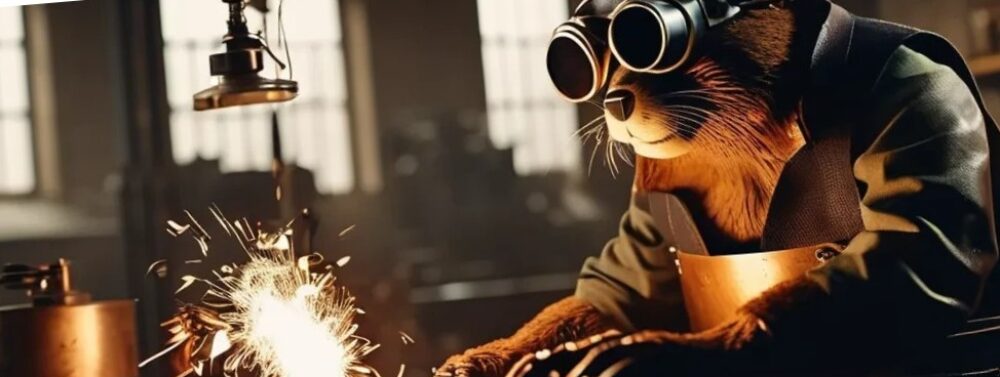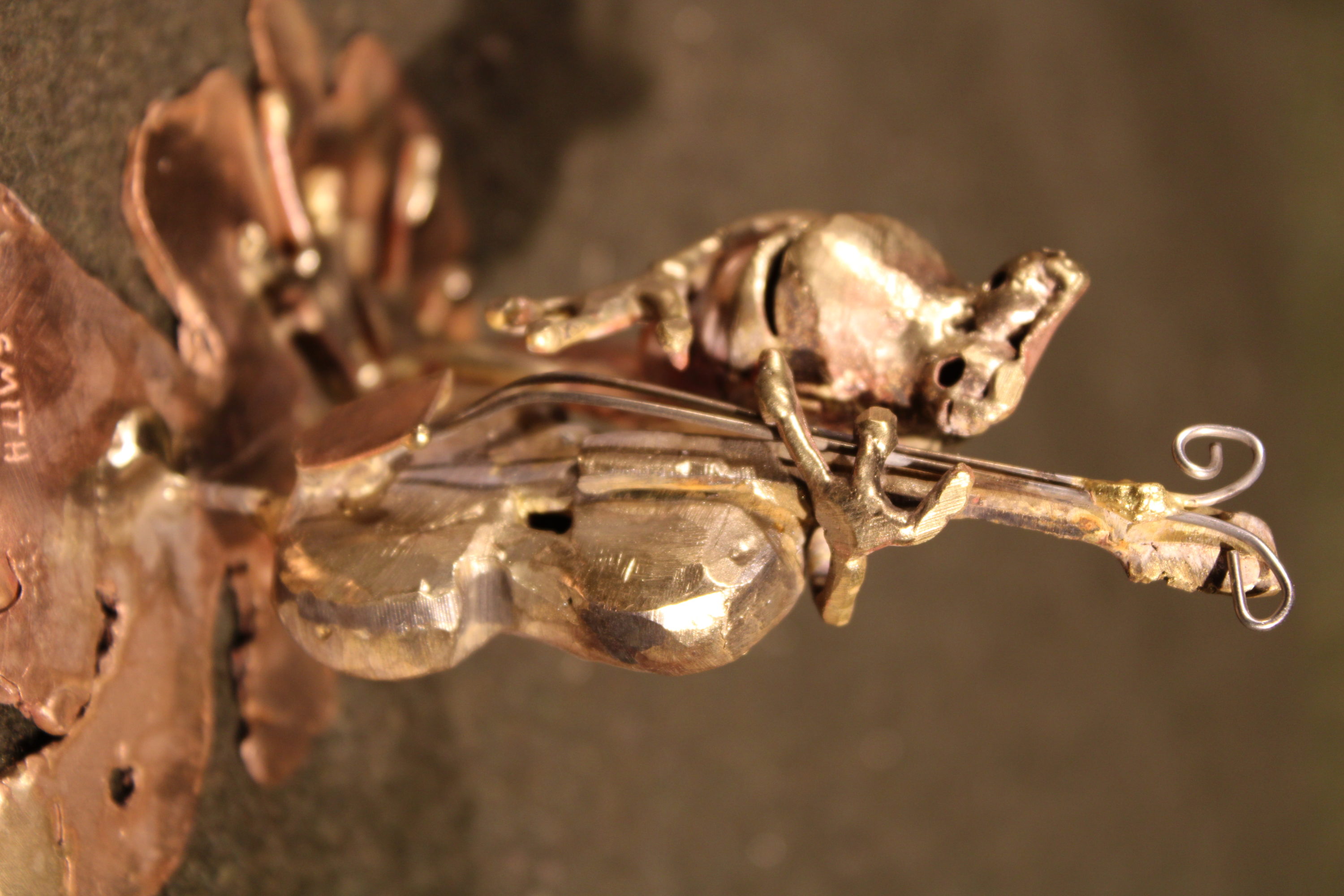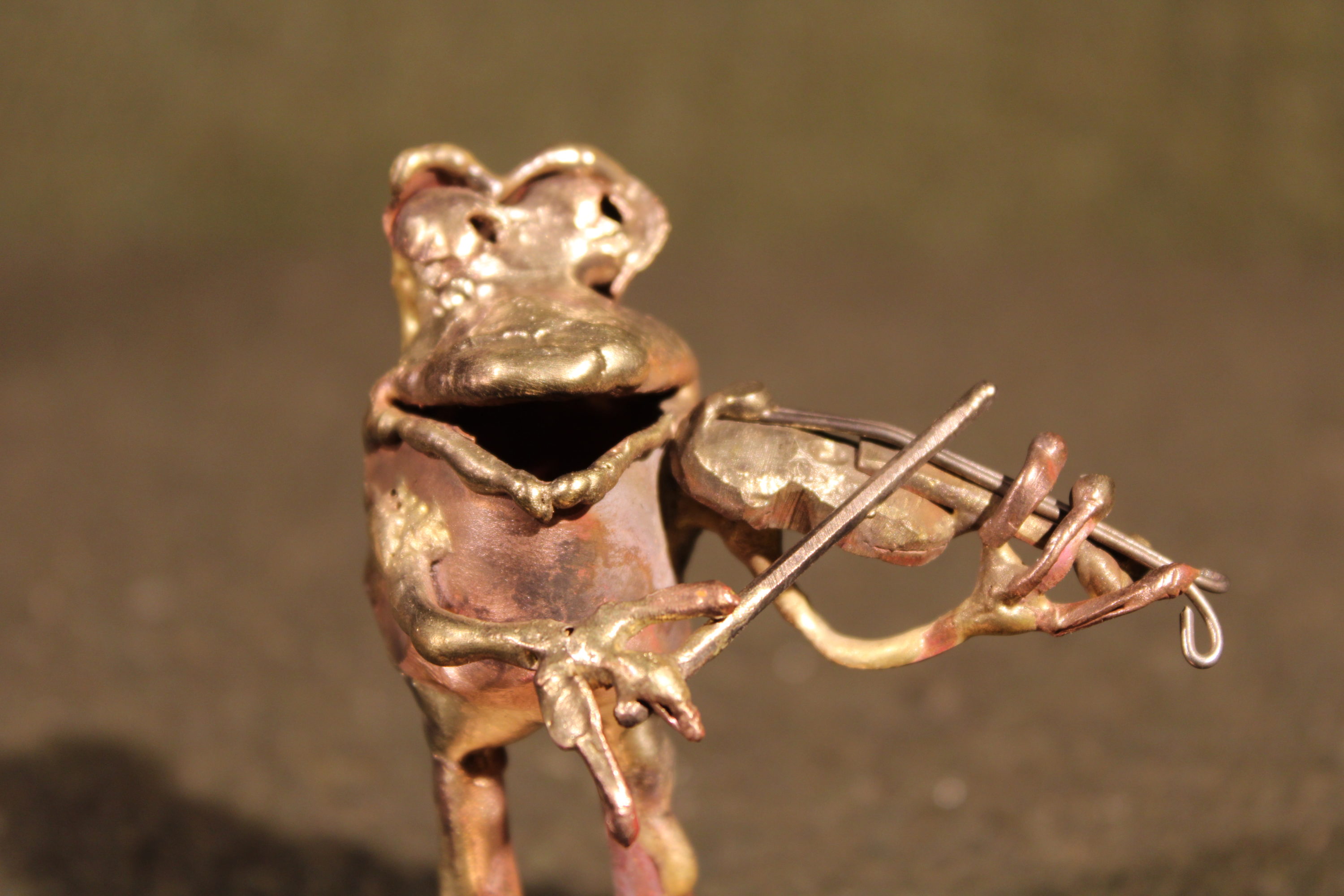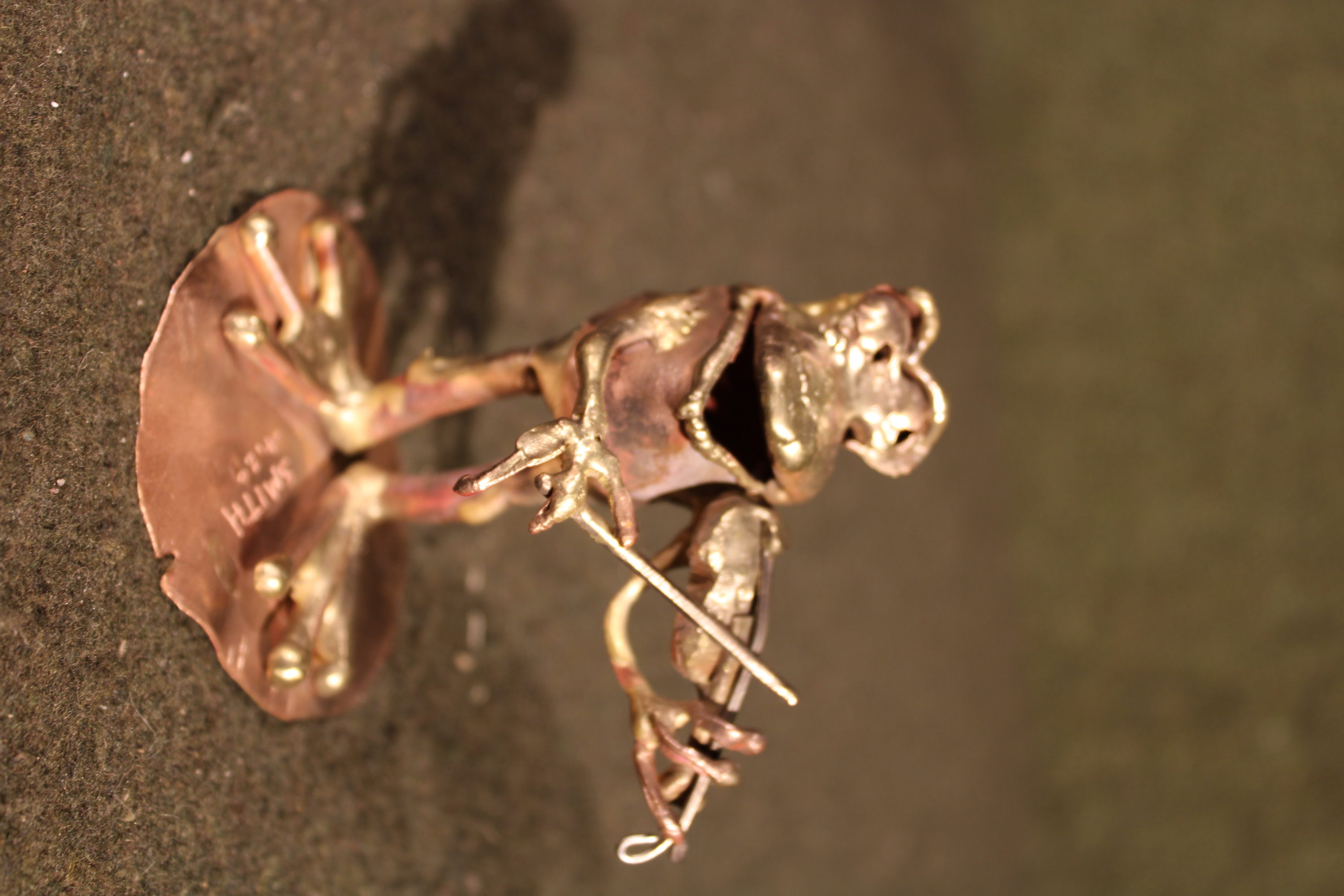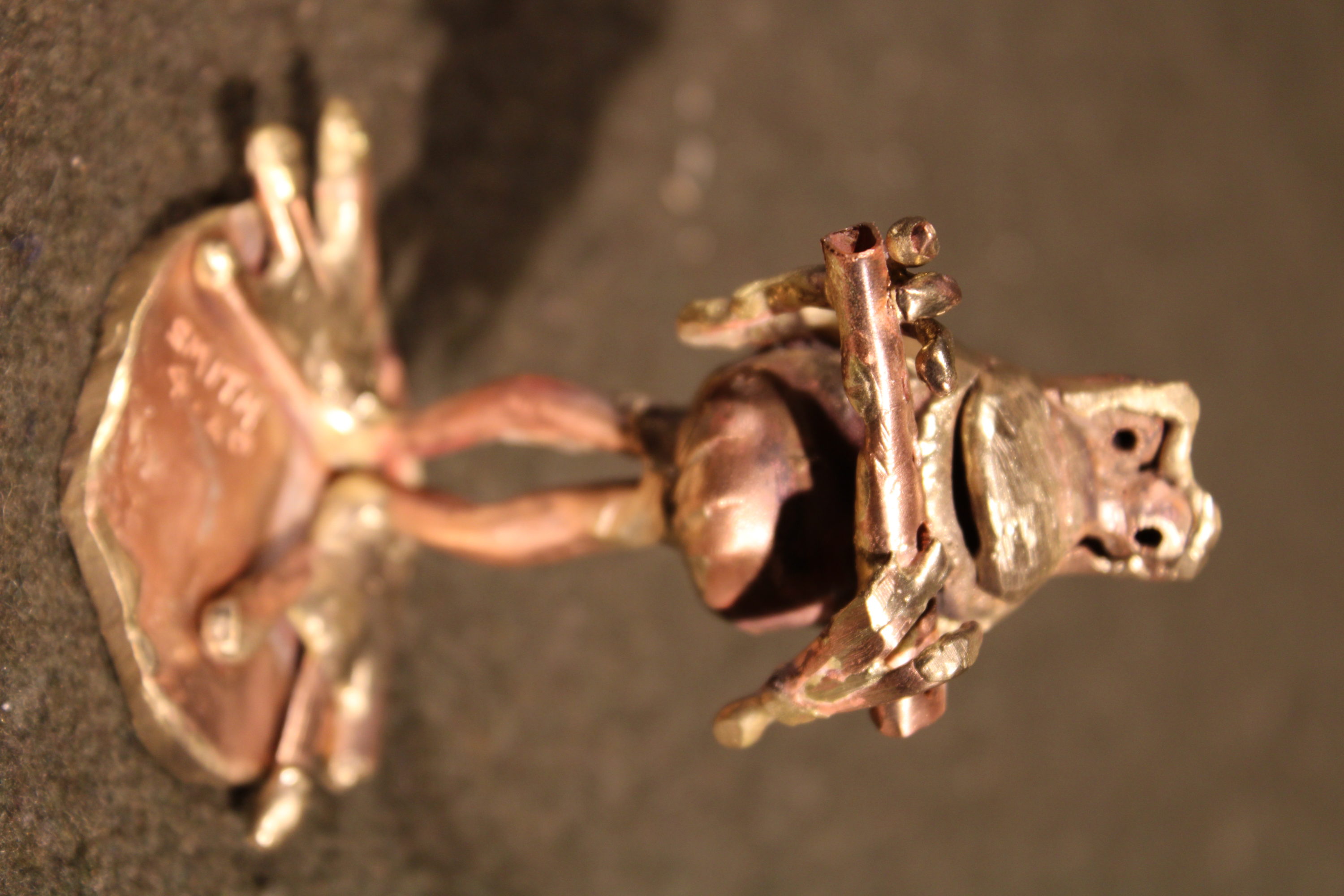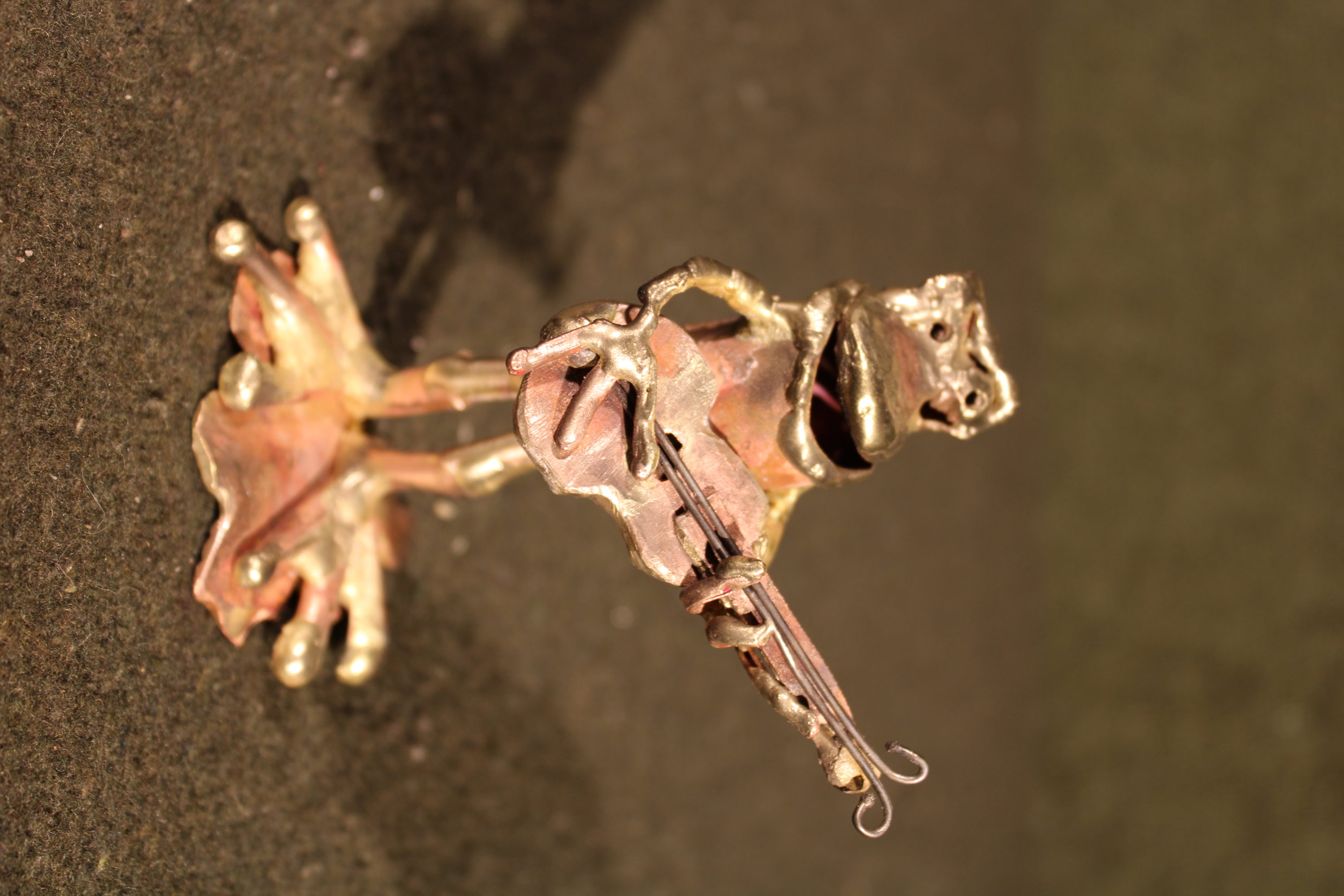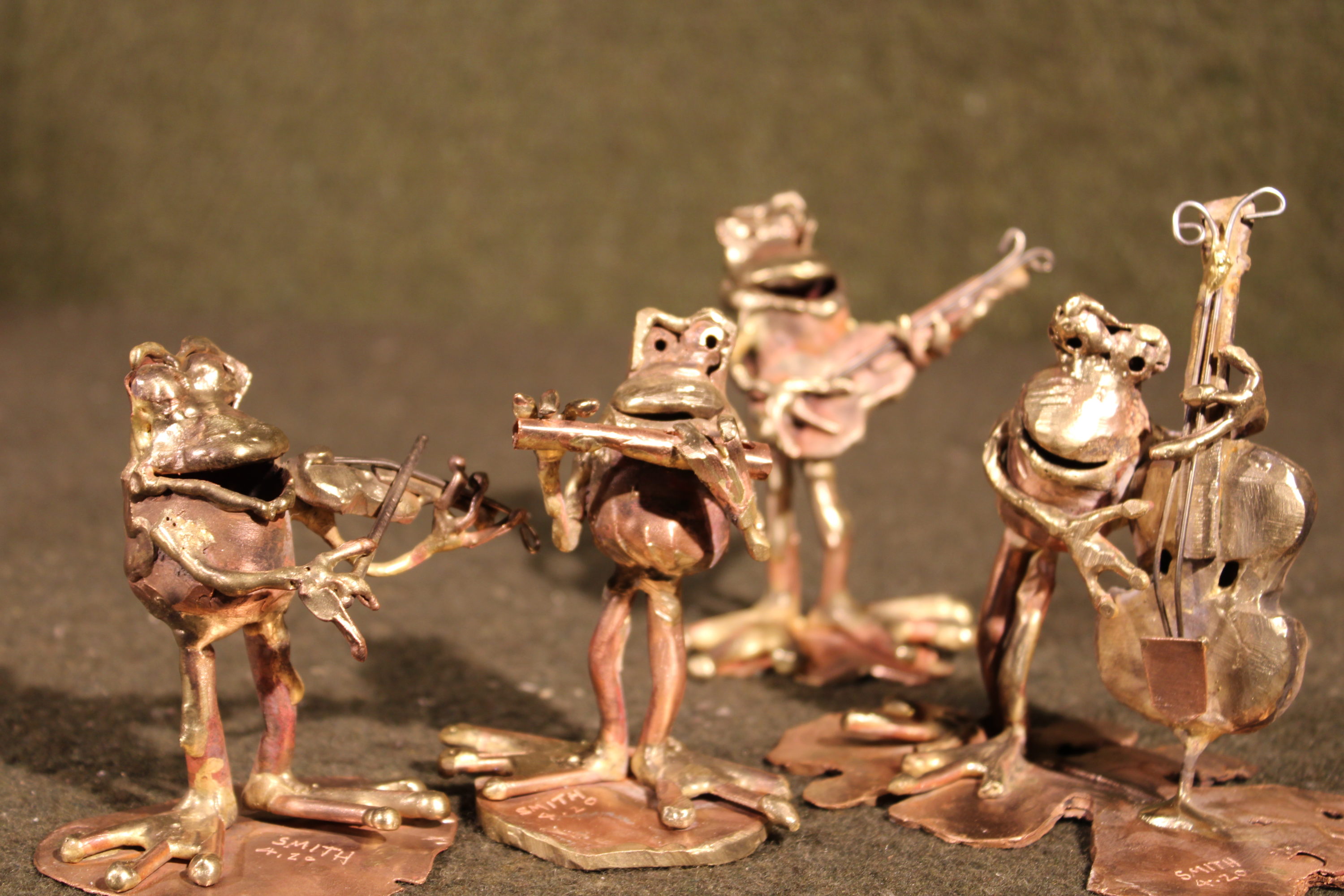

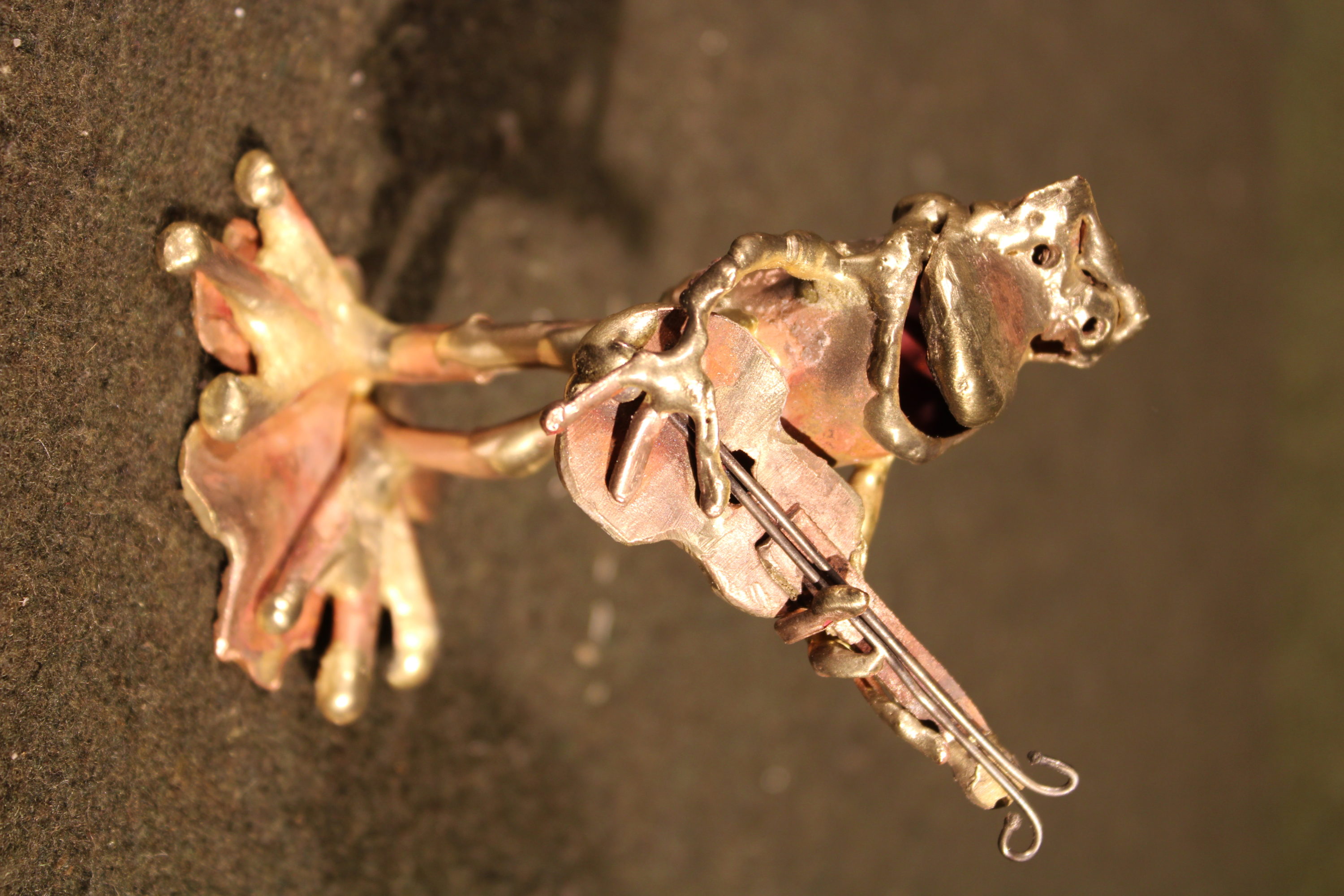


As an effort to express the one-of-a-kind uniqueness of my sculpture, I am now begining to blog about everything I make, so you can know exactly what gets made by me when and the level of innovation with each piece.
These are froglets. Froglets are, by their very nature, different from the large, human-sized sculpture I have been known for making for over 30 years now. When Covid struck, for some reason I felt inclined to make some very small work. It may be a combination of things that lead me to do this. One, I simply did not have an abundance of materials. And I work with semi-precious metals. Not cheap. Another reason I started making small things, I mean, exceptionally small, especially compared to what I usually make: This… This…virus that has struck the globe, this Covid inclined me to work small – as if (laughable, I know, but artists are like this)…as if I, in my own way, was contributing to the scientific effort to remove this parasite, this blight on humanity. (It can be argued, how much of a blight is this thing? It has reduced global warming. But it is also a killer. This is not, however, a place for such arguments.) I was compelled to work small – all the way to finger puppet size, and even smaller.
What this has done for me is sharpened my frog-making skills considerably. Also, it has allowed me to get more done. Because I have been working in this medium – direct metal sculpture – for so many years, my whole life, basically, I have my chops down. And so, when I approach a large piece, some of the work becomes, well, rather redundant. There is the need for me with every sculpture I make to learn something new, that is, to innovate, even if in a small way. Now, to be sure, there is something to be said for repetition. That, in itself, is extremely helpful in gaining requisite craftsmanship. But, I was finding that I knew certain things, and repetition had become a place of diminishing returns.
So I have started working small. I like it very much. Even though I cannot always get the exact detail I am going for, and there are limitations, I like limitations. I have grown used to them. I have grown used to the metal telling me what it is going to do, and having to work within its considerations and its behavior. This is different from what is traditionally known as “plastic” mediums, such as clay and paint. These plastic mediums seem to – I say, seem to, because they have their limitations and personalities as well – allow the artist to craft whatever suits him and make a thing look like whatever suits him.
This has been a gradual movement – the movement toward working small. Earlier this year, in January, I think it was, I had started a series of “squat frogs”. This, from a a design, like the human-size copper frog, that originated with my father, Charles Smith Jr. . I turned to the squats (short for squat frog) out of a need to redefine and continue to hone my skills. It has been that when I have had apprentices working for me, the very first task that I give them – insofar as frog-making is concerned – is to learn how to make a small squat frog. These little frogs do not require the same proficiency of technique that a large frog demands. Yet they do require skills. Further, what I have found is that they require more skill than one might think. It is easy enough to get the basics. But to become really good at making a squat frog – this demands more skill, along with a healthy dose of humility. Working small is a comparatively modest thing, in contrast to working large.
I found, in working on the small squat frogs, that I had still much to learn. I had craftsmanship still to gain. For example, on a small squat frog, it is not the easiest thing to get the mouth lined up right, especially in the corners. Placing the tongue in correctly, or what can be taken as a tongue, takes some doing and can be done more than one way (as is true for most of the sculpture).
One theme again and again that I would come upon is that of making the sculpture the way my father made it verses making it differently – that is, innovating. To be sure, my father’s way of working has been full of invention. That is why it has been so difficult and taken so much time to change the design. He got the particulars so well. Why mess with perfection? Why mess with perfection? But that is exactly what an artist does – every day, hopefully. The day you stop messing with perfection is the day you stop being an artist.
There is the story about why a certain recipe calls for a certain size pan or dish: because that is the size of dish your great-grandmother had available to her. That is why the thing must be made with that size dish. I recall many, many years ago, perhaps a few decades ago, this ceramicist told me this story about how he went to China because he wanted to learn about their great craftsmanship concerning ceramics, only to find that they were doing things over and over year after year, for hundreds, perhaps thousands of years that way. Can you ever make something differently? No. And so he was very disillusioned with his trip to China. They do everything the same, regarding ceramics. That is how they do it.
There is something to be said for acting in such a way, repeating oneself over and over ad infinitum. But – tell me otherwise if you don’t agree – it gets boring, monotonous, and, dare I say, non-creative when you work that way day in and day out.
So there is this thing my dad would do with the squat frog design. He would simplify it to the point where it did not have any back legs. No back legs. Very minimal. And it worked, although some folks did not like it. Others do. They like it a lot and are willing to put their money where their mouth is. They pay good money for such a frog sculpture.
But as I was working on these squat frogs in early January, I found myself changes things up. What if, God forbid, I put hind legs on these creatures? I started doing that. A fellow that sells my work told me they looked WAY better that way. So, I continued, and that is the way I make them now. And I will have pictures up of the latest thumb-sized squats. As I made the squatting frogs smaller and smaller, I finally got to a design and over-all look and style that was really, really great. It looked like a comic book character. It looked really finished.
And then, I felt compelled to continue to work smaller. During this time, I was also looking into ways to make more pieces at one time, to “mass produce” them. But I was not really mass producing them. I was still making everything by hand in my shop. So it was not mass produced. However, I looked at methods to become more efficient and to make it such that I could hire others to help me. Because, when I have others work for me, they do not have the skill to do this or that a certain way. I have to make the creation of a form easier for them. So this is my “Henry Ford” aspect of innovation. The factory aspect. Which all – or, most, should I say – artists have.
But then I came to a place where I realized that I had to make every piece myself. Even so, to work this way is a joy, like Charles Schulz making his Charlie Brown. Such is the way with musicians as well. You sing the same song. But it is different every time. Every time you sing the song, it becomes alive. That is the joy of working this way.
So it is that I am working small, and these pieces, and some others in this category, are of the first. And that is a reason for me to blog here. Because much of what I do, there is a first for everything. Which is to show the path, follow the path of the collectable.
Indeed, whoever buys – purchases, aquires, owns – the little frog musicians shown here, well, this is the first I have made such creatures… Is that exactly true? Maybe not exactly. I have made small musician frogs before, but not with the exacting efforts I have put into these and ones that will follow. Indeed, here and there, I have made small pieces. I’ve made them, not put too much thought into them, and gone on. But now, I am working with much more focus. That’s another thing one gets by working small. You get focus. The details sharpen. So, in fact I have made small musicians before, so I did have something to think about in the back of my brain when designing and creating these. But they are also singular and a first.
I may now make other musicians that are a bit larger than these, and they will be fantastic. But, interestingly enough, I think these tiny finger puppet size things are fantastic, and totally worth a lot more than I would sell them for, and, in fact, am selling them for.
These are a first. And I will continue to blog about my sculptures and what series I am working on and so forth. This adds a lot of value to the work. It places it. It gives whoever owns it the history of the creativity in the work. It’s very cool.
So these are some of my Covid frogs. Did I also mention that the virus can live only 4 hours on copper? So that makes these an especially safe and secure gift at this time. But, all that for another blog entry. I give you, then, the finger size copper froglet musicians.
If you want to buy them (if they have not already sold), I will make them available in the SHOP! :). So head on over there, if you have not already, and check them out.
